
3rd International Conference on Computer Graphics and Interactive
Techniques in Australasia and Southeast Asia
29 November - 2 December 2005 · Dunedin, New Zealand






| GRAPHITE 2005 - Digital Art | ||
|---|---|---|
| Wed 30 Nov - Fri 2 Dec, Mezzanine Floor | ||

|
1. SpiritSeeker 1. Jen Zen (Jen Grey) (California State University, Long Beach, USA) In dreams, all forms are light. Any shape can be replicated in any material at will. I slide in and out of the second dimension to cross the universe, and fly without ubiquitous body armor. Creating 3D CGI imagery is as close as I can get to repeating this experience. |
|
|
2. Ammo Explosion. Kurt Jonathan Adams (New Zealand) This series of work represents an exploration into drawing on and off the computer, constructing visual parallels with pencil line and wireframe, smudge and the glitch, enabling a tactile flux with the internal logic and properties of computer data. The fragility of paper depicts the precarious nature of the hand made (authentic) and the anonymous digital space (authority). |
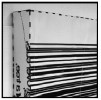
|
|
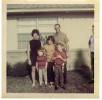
|
3. 1964, 1970. Markam Keith Adams (USA) These images are from a series entitled The Will is Not Enough wherein I digitally insert images of myself from the present into images from my childhood. This project deals with concepts of memory and identity, as well as the impact of digital media on photography's vernacular (the snapshot). |
|
|
4. Corrected Input. Donald Lowell Bergland (University of Victoria BC, Canada) The work explores human expression and the dialectical confrontation between biology and machine. Consisting of figurative visionary icons, the image components portray human emergence through immediate impact with the cybersphere. Archetypal metaphors entwined in myth, metamorphosis, resurrection, and regeneration, document our evolutionary journey through the artifacts of technology. |
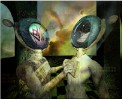
|
|

|
5. Head to Head. Brit Bunkley (Quay School of the Arts, USA / Wanganui UCOL, New Zealand) Bunkley began using computers as a design tool for public sculpture in 1992. His use of digital media functions by capturing an invented image in a believable but slightly skewed setting, which is both convincing and oblique. Bunkley's digital work includes 3d print rapid prototypes, virtual environments, installations, ink jet prints, videos, castings, and CNC's (computer numerically controlled milled objects). |
|
|
6. Tortuosity #56c Sheriann Ki Sun Burnham (USA) Recently I have been exploring color to reveal and emphasize previously hidden structures and details. Who knows if these floating clusters represent manifestations of inner or outer, micro or macro space? The forms ebb and flow, evoking something real, yet imaginary. |

|
|

|
7. Muleta Rolante. Jack Castro Holmer (Brazil) There is currently no information for this item. |
|
|
8. Encrustation. Bill Hill (Jacksonville University, Florida, USA) This work was created by modeling virtual sculptural elements and then electronically painting textures upon their surfaces. The branching and joining of physical forms in my work echoes the behavioral flow and multiple directions a species may take in the act of self-organizing. I am compelled by open structures that define form but do not close the form off to the viewer. |
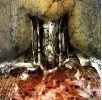
|
|
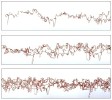
|
9. Drawing Machines: OZ. Mark Hill (Northumbria University, UK) Drawing Machines expands the traditional idea of a ground for drawing to extended frameworks of technological apparatus, software procedures, artist, contextual setting and other associated paraphernalia. Drawing in this context is an informational flow and exchange between mechanisms of interpretation, translation and transference, reflecting the frameworks overall structural narrative - an expanded cognitive space or ground in which unique modes of representation may be explored. |
|
|
10. Arum digiti, Lizzara cirsium . Ellen Jantzen (USA) The natural world has inspired me to explore issues of GMOs (genetically modified organisms) with their creation of Chimera-like new life forms. Often combining site-specific photography of natural organisms (specifically flowers) with either man-made or other natural elements, I take digital photographs of these ephemeral assemblages, then using my computer I create my hybrid forms. |
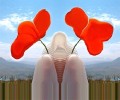
|
|

|
11. Light Content 1 - Points of View. Christine Keller (Otago Polytechnic, New Zealand / Germany / Canada) This work is an ongoing exploration of new materials in the realm of textile art. I use Retroglo yarns (highly reflective yarns) with digital Jacquard weaving to create works where images appear and disappear in response to changes in light. This piece investigates the ephemerality and transitory nature of memories and concepts in time in a sensual and experiential fabric-based work. |
|
|
12. Practicing Magic. Davida Eve Kidd (Canada) The sleek compositing effects of the computer that I employ, where real and unreal are seamlessly blended, act as a metaphor for the complex ambiguities surrounding our choices, particularly in this new digital age, where new strains have been put on the human psyche. Entities that are created through the culture of the computer are taking on a whole new meaning as "real" and "imaginary" step onto the same plane. |
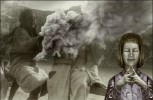
|
|
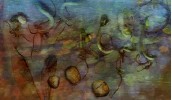
|
13. Vertical Flight, Meeting at Water's Edge. Ann Marie LeBlanc (Indiana University-Purdue University, USA) From the Series Unearthing Nature's Kore, the images are inspired by the Mississippi Delta Region where I spent my formative years. They examine the brackish waters where fresh water and salt water meet, and where unusual organic life forms. The work makes reference to "Kore", a name give to the goddess Persephone who, as well, blended an existence of two worlds. |
|
|
14. Noise Control. Anna Ursyn (University of Northern Colorado, USA) I examine what technological and human worlds have in common. Natural order, revealed randomly and regularly, infuses several levels of both worlds: some determined by man, through buildings, their windows, and some determined by nature, through trees, branches and leaves arranged. Computers then convert my ideas into lines, with codes taking shape as iconic images of animals |
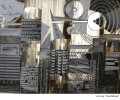
|
|

|
15. Orna-ment. Guan Hong Yeoh (Wanganui School of Design, New Zealand / Malaysia) The elements of this work are inspired by nature, and the transformation of shape, form, light, shade and hidden energies manipulated and emphasized by linear or field repetition. Abstraction & aesthetics appear along with this repetition and at the same time generate a strong implication of mapping theory and topology. |
|
|
16. World Tree. Colin Beardon & Raewyn Turner (University of Waikato, New Zealand) World Tree references the research of ethnomusicologist Ashley Turner (Australia) who studied the Belian practice of using the tree as the central axis of the macrocosm, connecting the earth and the sky. WorldTree is timed to execute for exactly four minutes, it produces a tree from a given text, in a random manner so that no two executions will be identical. |
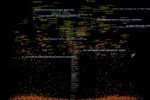
|
|
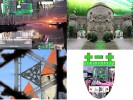
|
17. District of Leistavia. Ian Malcolm Clothier (Western Institute of Technology at Taranaki, New Zealand) The District of Leistavia is a hybrid cultural entity with formative influences of Pitcairn Island, Norfolk Island and Estonia. During ISEA 2004, voting toward a constitution was conducted, following which a constitution was created, a unique document clearly influenced by the formative cultures. My work explores cultural hybridity and nonlinearity and the means by which these map on to creative practice and art works. |
|
|
18. Quarantine. Nick Dewar (New Zealand) A television sits captured and quarantined, nestled amongst its own many power cords. I am predominantly interested in how corrupt information, or misinformation - transmitted through the readily available domestic transmitter the television can influence people into acting, thinking and behaving in ways they would not, had they not been exposed to this corrupt information. |
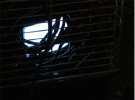
|
|
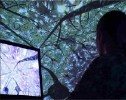
|
19. Embodied Time: Exploring Interaction. Julainne Sumich (New Zealand) This work is modeled on the processing of stimuli in a neural system. The user's virtual activity, and the real world activity detected by the web cams, generate inputs resulting in a firing sequence of neural processes displayed visually and aurally. This interactive environment attracts users to the duration and affect of synaptic life. |
|
|
20. T Video. Ezra Cove (Mount Ida College, USA) "T" is a completely digitally-generated video presented as a looped sequence, showing a pencil tracing a drawing of the letter "T". As the pencil presses into the paper at each corner of the "T", the picture plane of the video is concurrently convexified. 3D computer animation allows for a displacement of space and action both perpendicular and towards the viewer. |
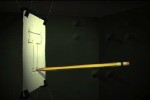
|
|
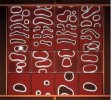
|
21. Drift. Brian Knep (USA) Organic shapes grow, shrink, split and join across five projected panels, drifting slowly from right to left and traveling from one panel to the next. When a shape drifts off the left-edge of the leftmost panel, it reenters into the rightmost panel. The system is a closed loop, and the shapes never repeat. |
|
|
22. Portable Planetarium. Paul Bourke (Swinburne University of Technology, Australia) A range of short full dome animations will be presented from artists from the Pacific region and internationally. This will include a range of content types including scientific visualisation, educational astronomy, entertainment, and immersive environments. This exhibit will also form a demonstration of a new low cost projection system for immersive environments, the subject of a short paper presentation at the conference. |
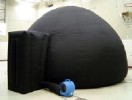
|
|
